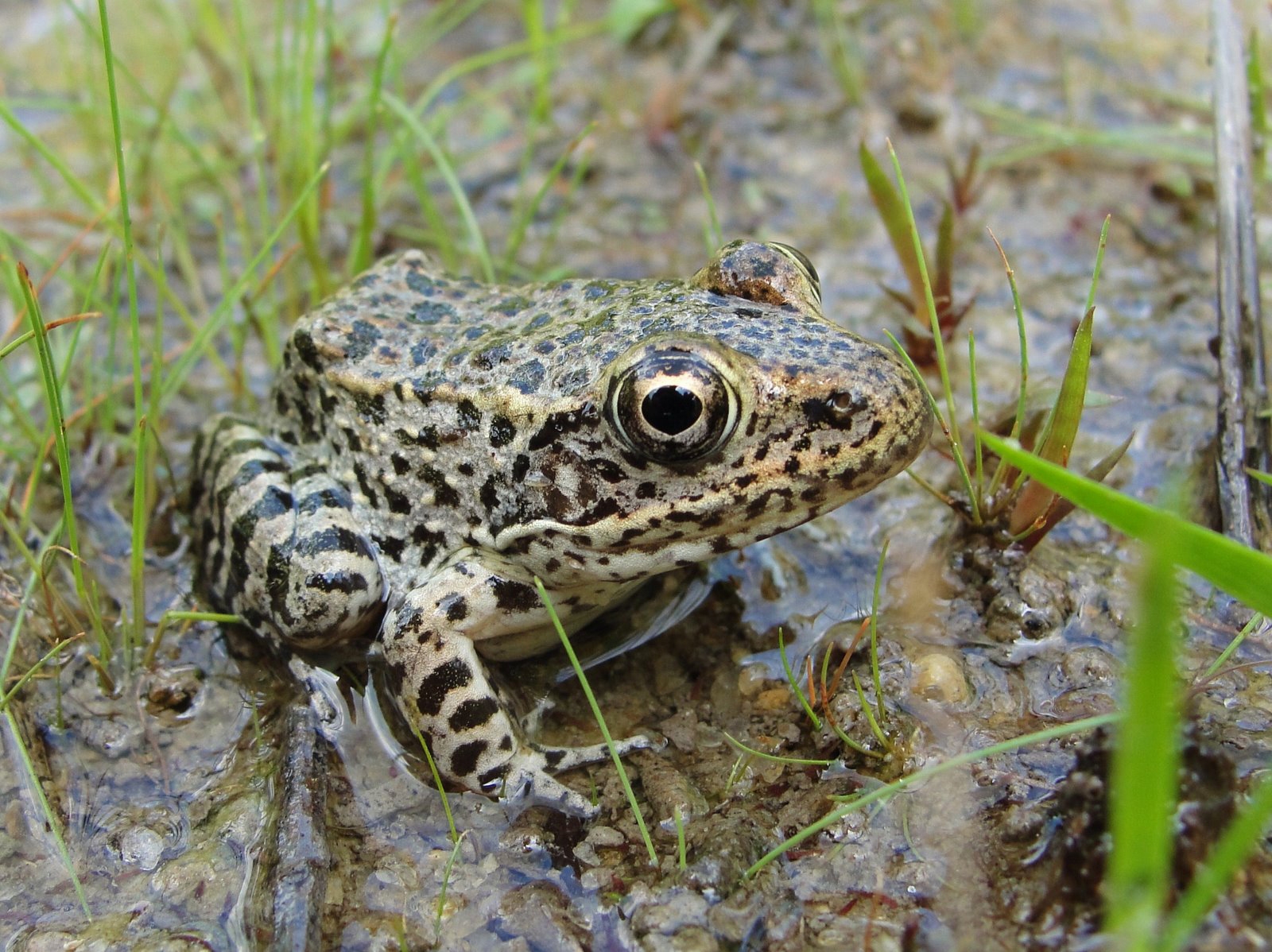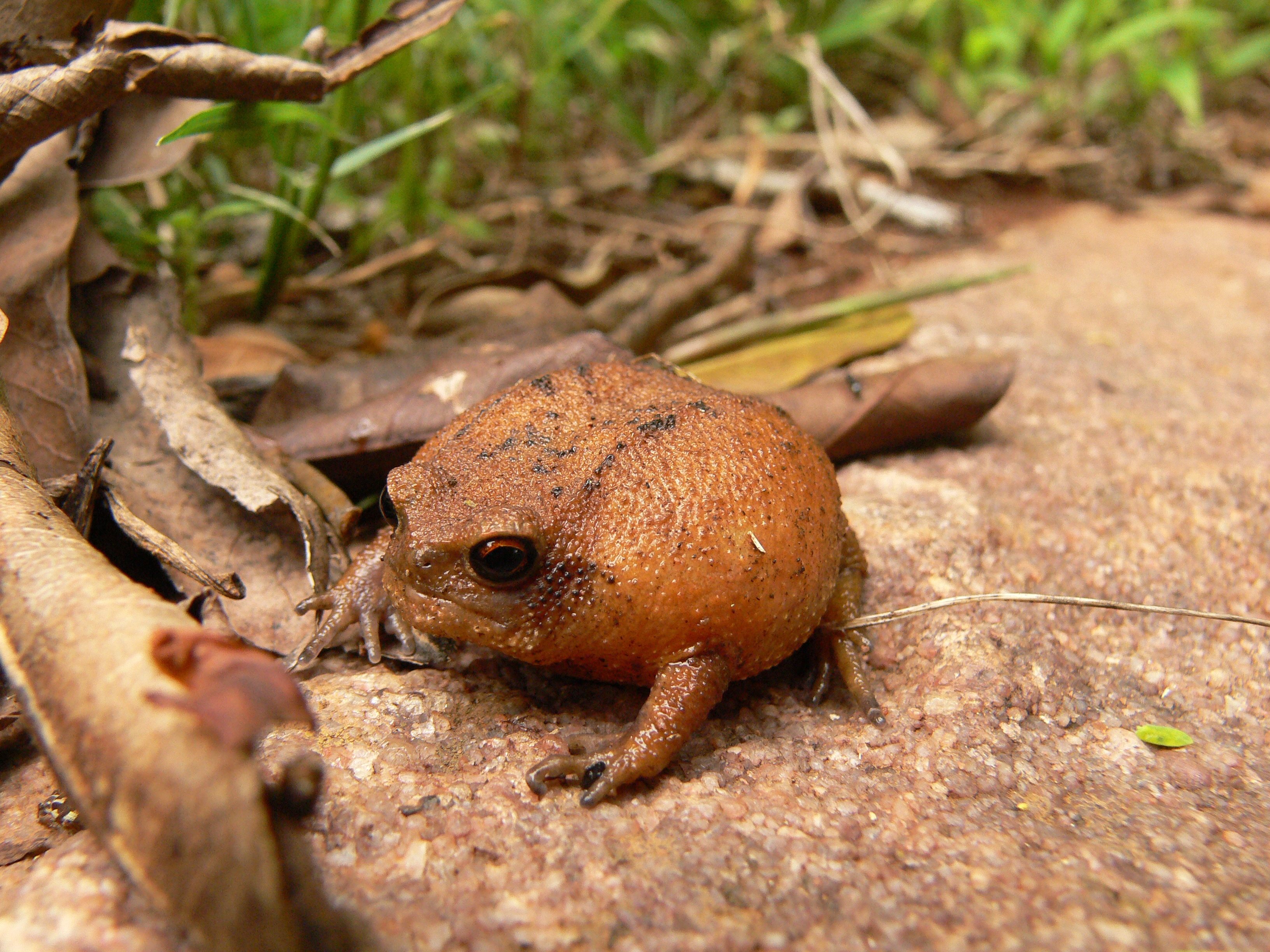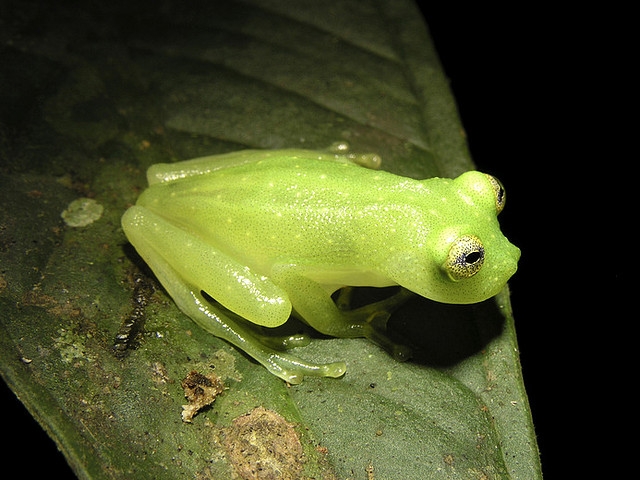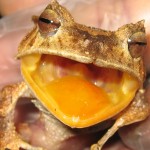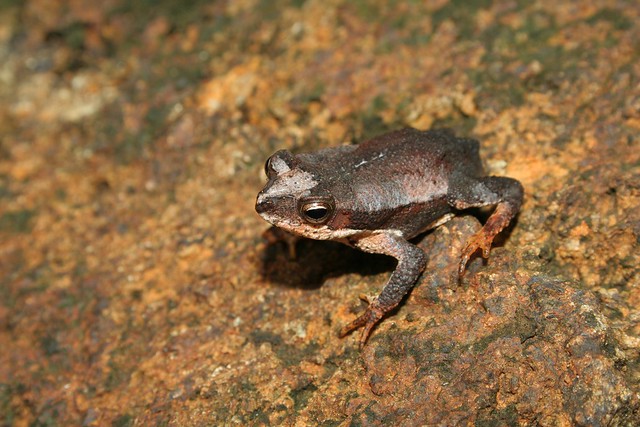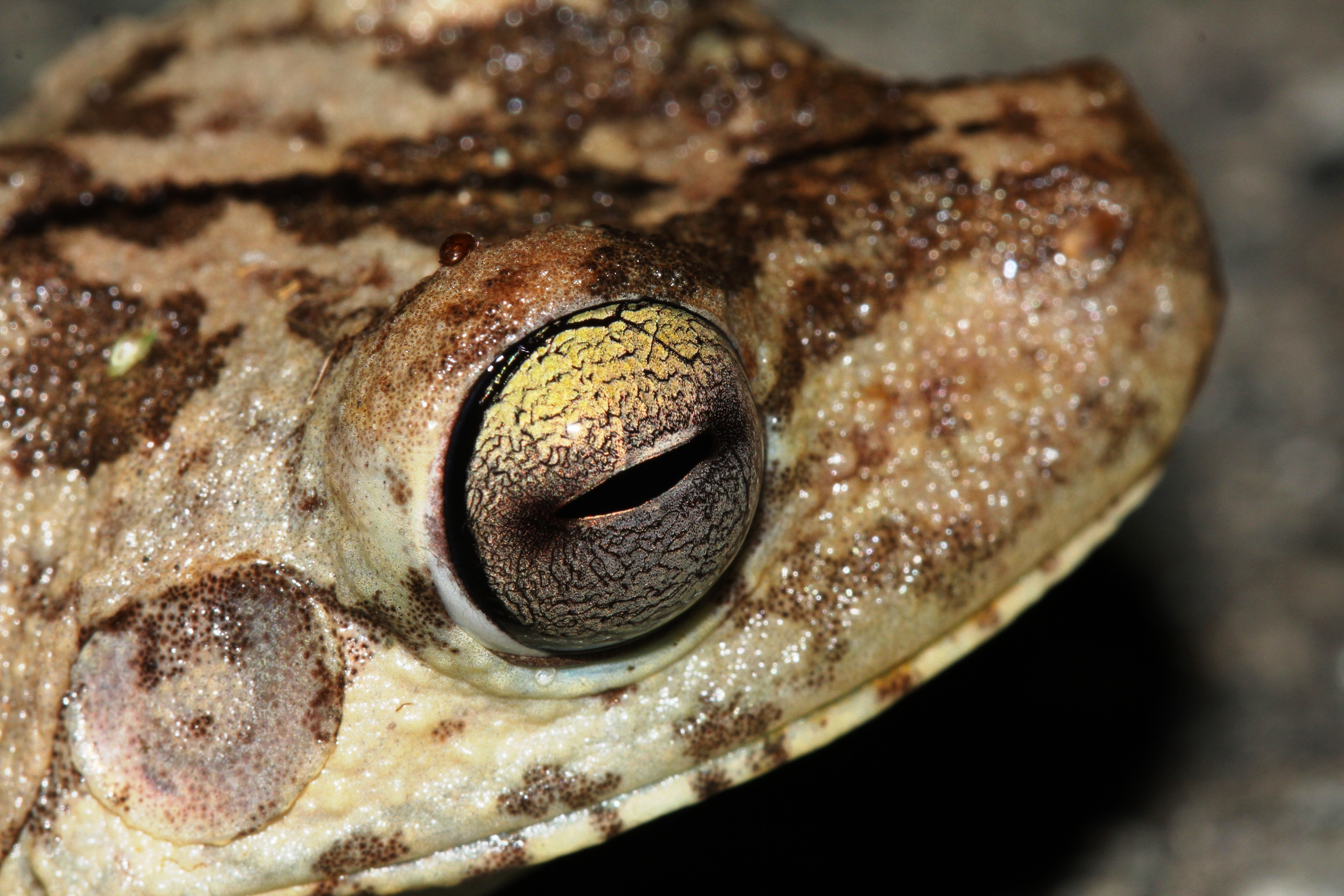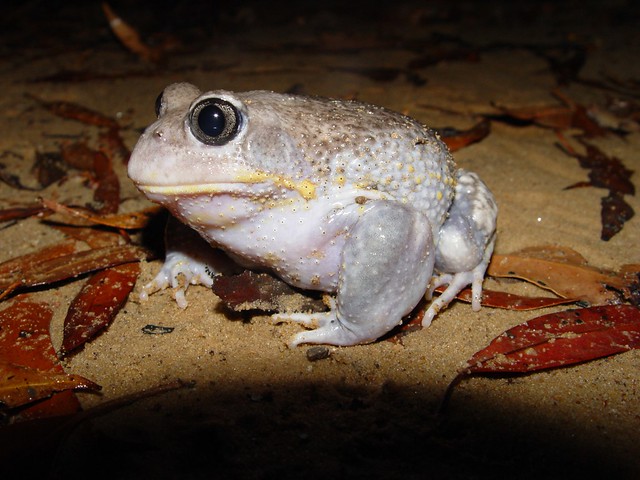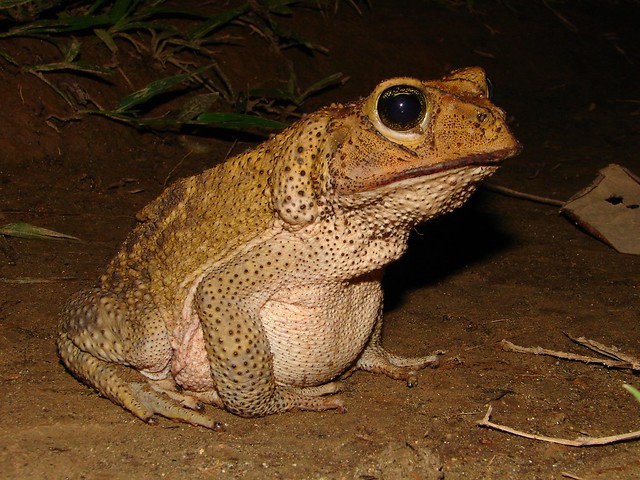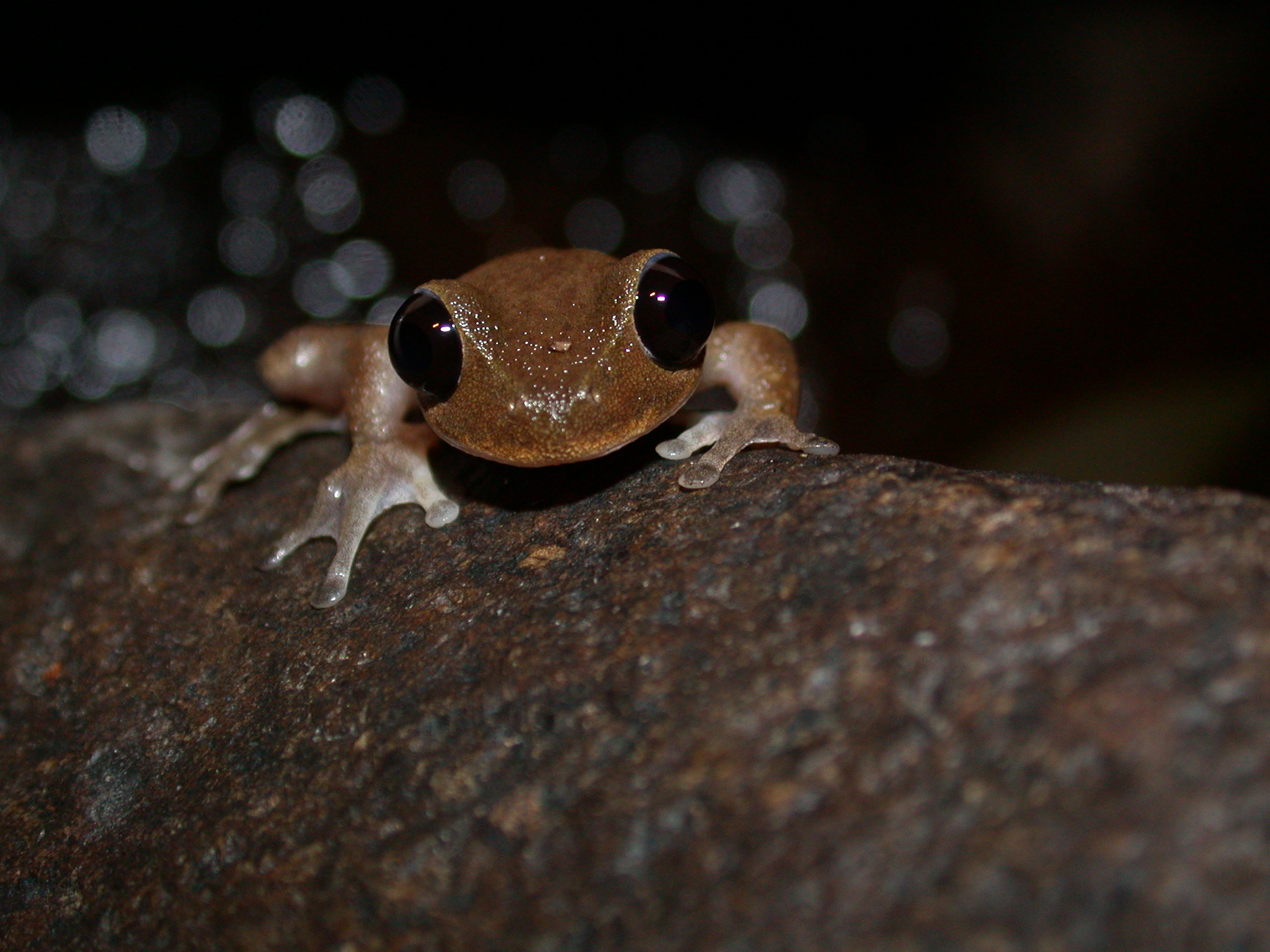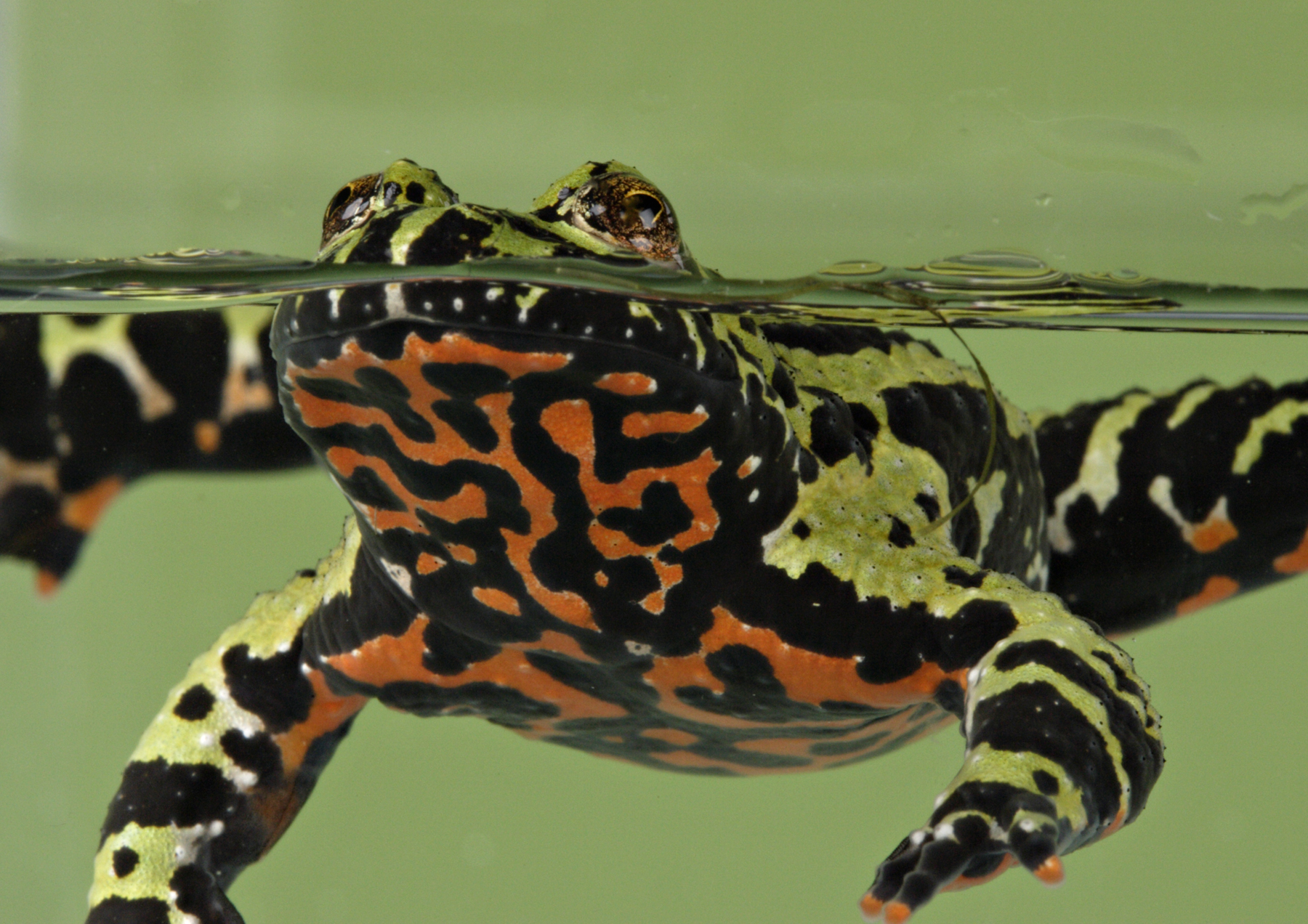Cute Frog of the Week: Nov. 7, 2011
This reclusive nocturnal frog tends to be very shy, and likes to live in holes, burrows and tunnels during the day. It does not dig its own tunnels, but rather utilizes those that have been dug by other animals, most often gopher tortoises.
This frog is short and stubby in appearance, with dark spots covering its body. The gopher frog also has two very prominent ridges along the side of its back, one on each side, starting from behind the eyes.
Native to the United States, this species can be found along coastal plains from the southern half of North Carolina to southern Florida and west toward Alabama. It is unclear just how fast their numbers are declining because they are so reclusive and hard to find in general, but they are listed as near threatened by the International Union for Conservation of Nature. This is due to extensive habitat loss, which they do not adapt well to, caused mainly by agricultural, residential and commercial development, as well as the timber industry. Other threats include fire suppression and peat build-up, which increases acidity levels in the water; introduction of predatory fish into breeding ponds; and the declining population of gopher tortoises whose burrows are most often used by these frogs.
Photo by Kelly Jones via Arkive.
Every week the Panama Amphibian Rescue and Conservation Project posts a new photo of a cute frog from anywhere in the world with an interesting, fun and unique story to tell. Be sure to check back every Monday for the latest addition.
Send us your own cute frogs by uploading your photos here: http://www.flickr.com/groups/cutefrogoftheweek/

